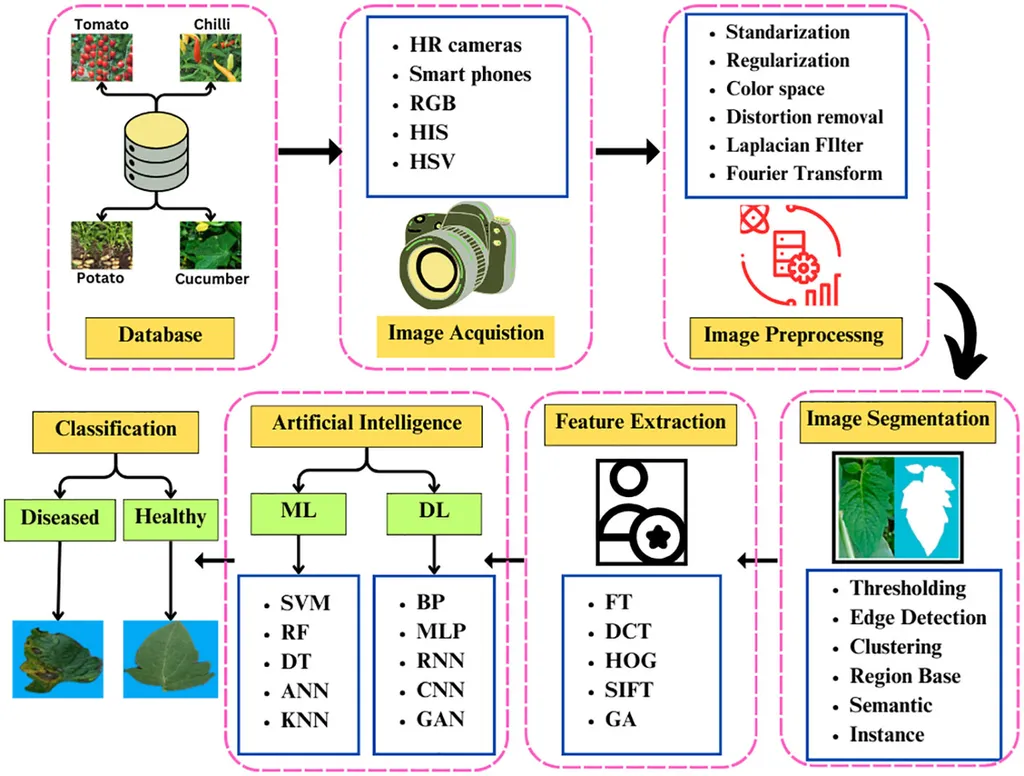In the quest for sustainable agriculture and food security, early and accurate detection of plant diseases is paramount. A recent study published in *EPJ Web of Conferences* delves into the performance of hybrid deep learning architectures for classifying both plant diseases and their severity, offering promising advancements for the agriculture sector. Led by Palve Yogesh, a Research Scholar at the School of Computer Science & Engineering, Sandip University, the research evaluates a variety of models, including CNN-based architectures, CNN-LSTM hybrids, attention mechanisms, and lightweight object detection models like YOLO and EfficientNet derivatives.
The study leverages several benchmark datasets alongside field-acquired images of rice, cotton, tomato, and sorghum to assess the effectiveness of these models. By employing performance measures such as accuracy and F1-score, the research provides a comprehensive comparison of different architectures. The findings reveal that hybrid models often outperform pure CNN counterparts, particularly in detecting the severity of multi-stage diseases. “Our experiments show that hybrid architectures, especially those incorporating attention mechanisms, can significantly enhance the precision of disease severity classification,” Yogesh noted.
The implications for the agriculture sector are substantial. Accurate and timely disease detection can lead to more effective pest management, reduced crop losses, and increased yields. “This research is a step towards automating plant health surveillance, which can be a game-changer for precision agriculture,” Yogesh added. The study also highlights the shortcomings of current methods and identifies areas for future research, such as improving model generalization, interpretability, and real-time application.
As the agriculture industry continues to embrace technology, the insights from this research could shape the development of more robust and efficient tools for disease detection. By choosing the right architecture, researchers and developers can enhance the accuracy and reliability of plant health monitoring systems, ultimately contributing to more sustainable and productive farming practices. The findings from this study are expected to guide future advancements in agritech, paving the way for innovative solutions that address the challenges of modern agriculture.

